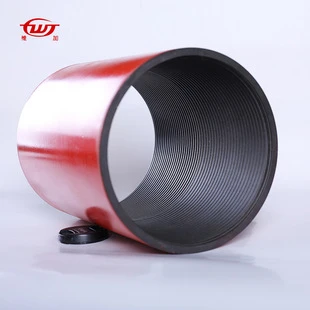- Afrikaans
- Albanian
- Amharic
- Arabic
- Armenian
- Azerbaijani
- Basque
- Belarusian
- Bengali
- Bosnian
- Bulgarian
- Catalan
- Cebuano
- Corsican
- Croatian
- Czech
- Danish
- Dutch
- English
- Esperanto
- Estonian
- Finnish
- French
- Frisian
- Galician
- Georgian
- German
- Greek
- Gujarati
- Haitian Creole
- hausa
- hawaiian
- Hebrew
- Hindi
- Miao
- Hungarian
- Icelandic
- igbo
- Indonesian
- irish
- Italian
- Japanese
- Javanese
- Kannada
- kazakh
- Khmer
- Rwandese
- Korean
- Kurdish
- Kyrgyz
- Lao
- Latin
- Latvian
- Lithuanian
- Luxembourgish
- Macedonian
- Malgashi
- Malay
- Malayalam
- Maltese
- Maori
- Marathi
- Mongolian
- Myanmar
- Nepali
- Norwegian
- Norwegian
- Occitan
- Pashto
- Persian
- Polish
- Portuguese
- Punjabi
- Romanian
- Russian
- Samoan
- Scottish Gaelic
- Serbian
- Sesotho
- Shona
- Sindhi
- Sinhala
- Slovak
- Slovenian
- Somali
- Spanish
- Sundanese
- Swahili
- Swedish
- Tagalog
- Tajik
- Tamil
- Tatar
- Telugu
- Thai
- Turkish
- Turkmen
- Ukrainian
- Urdu
- Uighur
- Uzbek
- Vietnamese
- Welsh
- Bantu
- Yiddish
- Yoruba
- Zulu
casing collar
Understanding Casing Collars Their Importance in Drilling Operations
In the realm of drilling operations, the terms casing and collar often come up when discussing the integrity and efficiency of drilling wells. These components play a crucial role in ensuring the safety and functionality of the wellbore. In this article, we will explore the significance of casing collars, their functions, types, and best practices for their implementation in drilling operations.
What is Casing?
Casing refers to a series of steel pipes that are inserted into the wellbore after drilling has reached a certain depth. The casing serves several essential purposes it stabilizes the well, prevents the surrounding formation from collapsing, protects the well from external contaminants, and provides a conduit for the extraction of oil, gas, or water.
What are Casing Collars?
Casing collars are specific components of the casing system, typically installed at defined intervals along the casing string. These collars serve as reinforcement points to facilitate joint connections between casing sections. They are manufactured to withstand harsh downhole conditions, providing additional strength, durability, and leak resistance at the connections where two casing pipes are joined.
Importance of Casing Collars
1. Structural Integrity Casing collars enhance the structural integrity of the well. By reinforcing the joints, they minimize the risk of failures caused by excessive pressure, unexpected geological formations, or other adverse conditions encountered during drilling or production.
2. Pressure Management The collars play a pivotal role in managing hydrostatic pressure within the wellbore. By securing the casing sections, they help control fluid movement and facilitate the balance of pressure between the wellbore and surrounding formations. This is essential for preventing blowouts, which can be catastrophic.
3. Facilitates Future Operations Casing collars allow for future interventions like logging, cementing, or installation of completion equipment. Their design often includes features that facilitate these operations, ensuring that the well can be accessed and modified as needed without significant downtime.
4. Leak Prevention One of the most critical roles of casing collars is to prevent leaks. A poor casing connection can lead to fluid migration outside the wellbore, which not only compromises the well's integrity but can also have severe environmental impacts. Casing collars help in creating seals that resist such failures.
Types of Casing Collars
Casing collars come in various types, each designed to meet specific operational requirements
casing collar

1. Standard Collars These are commonly used in most drilling operations and provide general reinforcement and sealing functionalities.
2. Cement Collars Used in applications where cement is pumped to secure the casing in place, cement collars help ensure that the casing remains stable during the cementing process.
3. Float Collars These are designed to allow the circulation of drilling fluids while preventing backflow, greatly aiding in cement placement.
4. Safety Collars These collars serve as a last line of defense to halt any uncontrolled flow in case of a compromise in the casing integrity.
Best Practices for Casing Collars
To maximize the effectiveness of casing collars in drilling operations, several best practices should be followed
- Proper Design and Selection Ensure that the right type of collar is selected based on the well conditions, including depth, pressure, and the type of fluid being used.
- Quality Assurance Utilizing high-quality materials and manufacturing processes can significantly reduce the risk of failures associated with casing collars.
- Regular Inspections Implement routine inspections and maintenance of the well to identify any potential issues with the casing or collars.
- Training and Protocols Equip drilling crews with proper training and protocols regarding the handling and installation of casing collars to minimize the risk of human error during operations.
Conclusion
Casing collars are integral components of the drilling process, providing essential support and stability to the casing system. By understanding their purpose and implementing best practices, operators can enhance the safety and efficiency of their drilling operations. As the energy industry continues to evolve, innovations in casing technology will undoubtedly play a pivotal role in shaping the future of drilling.
-
Tubing Pup Joints: Essential Components for Oil and Gas OperationsNewsJul.10,2025
-
Pup Joints: Essential Components for Reliable Drilling OperationsNewsJul.10,2025
-
Pipe Couplings: Connecting Your World EfficientlyNewsJul.10,2025
-
Mastering Oilfield Operations with Quality Tubing and CasingNewsJul.10,2025
-
High-Quality Casing Couplings for Every NeedNewsJul.10,2025
-
Boost Your Drilling Efficiency with Premium Crossover Tools & Seating NipplesNewsJul.10,2025







